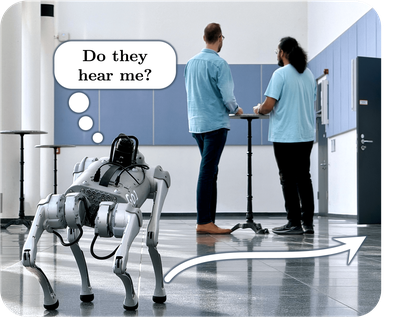Sound Matters: Auditory Detectability of Mobile Robots
Authors:
S. Agrawal, M. Wessels, J. de Heuvel, J. Kraus, M. BennewitzType:
PreprintPublished in:
IEEE International on Human & Robot Interactive Communication (RO-MAN)Year:
2024Links:
BibTex String
@inproceedings{Agrawal24roman,
title={{Sound Matters: Auditory} Detectability of Mobile Robots},
author={S. Agrawal and M. Wessels and J. de Heuvel and J. Kraus and M. Bennewitz},
booktitle={Proc. of the IEEE International Conference on Robot and Human Interactive Communication (RO-MAN)},
year={2024}
}

Abstract:
Mobile robots are increasingly being used in noisy environments for social purposes, e.g. to provide support in healthcare or public spaces. Since these robots also operate beyond human sight, the question arises as to how different robot types, ambient noise or cognitive engagement impacts the detection of the robots by their sound. To address this research gap, we conducted a user study measuring auditory detection distances for a wheeled (Turtlebot 2i) and quadruped robot (Unitree Go 1), which emit different consequential sounds when moving. Additionally, we also manipulated background noise levels and participants' engagement in a secondary task during the study. Our results showed that the quadruped robot sound was detected significantly better (i.e., at a larger distance) than the wheeled one, which demonstrates that the movement mechanism has a meaningful impact on the auditory detectability. The detectability for both robots diminished significantly as background noise increased. But even in high background noise, participants detected the quadruped robot at a significantly larger distance. The engagement in a secondary task had hardly any impact. In essence, these findings highlight the critical role of distinguishing auditory characteristics of different robots to improve the smooth human-centered navigation of mobile robots in noisy environments.

